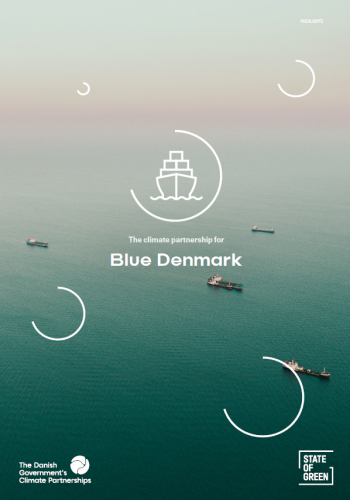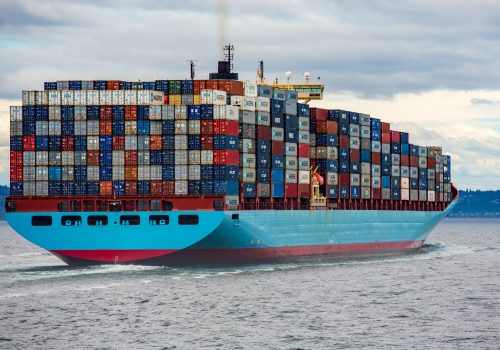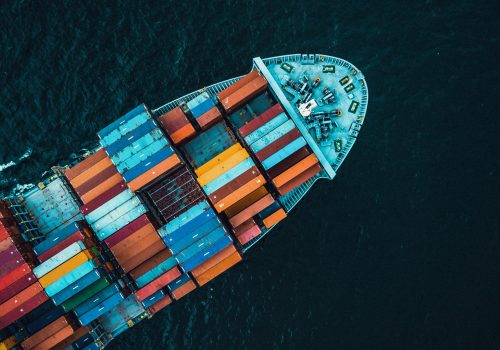The challenge
Danish domestic shipping emits 0.8 million tons CO2 annually. This includes ferries, fishing vessels and ships sailing between two Danish ports. Emissions from Danish
international shipping amount to 38 million tonnes of CO2e.
Several barriers must be overcome to achieve Blue Denmark’s CO2e emission reduction targets. The key challenges to address over the next ten years are:
- Shipping is an extremely competitive sector, operating in a global market and is consequen...
Danish domestic shipping emits 0.8 million tons CO2 annually. This includes ferries, fishing vessels and ships sailing between two Danish ports. Emissions from Danish
international shipping amount to 38 million tonnes of CO2e.
Several barriers must be overcome to achieve Blue Denmark’s CO2e emission reduction targets. The key challenges to address over the next ten years are:
- Shipping is an extremely competitive sector, operating in a global market and is consequently sensitive to national regulation. The International Maritime Organization, IMO, is the only global regulator of the entire world fleet – hence IMO is the means to ensure significant global emission reductions while preserving a level playing field.
- Shipping must take a quantum leap in technology by replacing traditional fuels with new climate-neutral fuels in order to further reduce emissions in absolute terms.
- A substantial upgrade of the current energy systems on a national and global scale will need to take place to secure a reliable supply of green fuels in the maritime sector.
- The land-based energy infrastructure in ports must be upgraded to be able to handle the new green fuels or batteries
The potential
The transition to a more sustainable shipping industry is a massive challenge. As a leading maritime nation, Denmark has an obligation to show leadership and demonstrate that the Danish merchant fleet – be it ferries, fishing boats or ocean-going vessels – can become climate neutral.
The vision of the climate partnership is to make Denmark an international pioneer in decarbonising shipping, and to help achieve the 70 per cent reduction target set by the Danish government. This requ...
The transition to a more sustainable shipping industry is a massive challenge. As a leading maritime nation, Denmark has an obligation to show leadership and demonstrate that the Danish merchant fleet – be it ferries, fishing boats or ocean-going vessels – can become climate neutral.
The vision of the climate partnership is to make Denmark an international pioneer in decarbonising shipping, and to help achieve the 70 per cent reduction target set by the Danish government. This requires a sustainable transition of the shipping industry on both a national and global level.
The climate partnership for Blue Denmark has set two ambitious targets supported by all industry players across the Danish maritime cluster. Blue Denmark has set a target of climate neutrality by 2050 without the use of climate compensation. Furthermore, the first ocean-going zero emission vessel must be in commercial operation by 2030. These targets are ambitious and go beyond the IMO’s current global targets. The climate partnership has developed six initiatives, which its members are ready to invest in under the current conditions and has put forward 15 recommendations for government action. Combined, these will allow Denmark to support a sustainable transition of both the national and global shipping industry.
Recommendations
Industry
- Share shipping big data
Government
- Develop maritime climate solutions, including demonstration programmes
- Government-provided export financing to accelerate investment in climate friendly vessels
Industry
- Eliminate waiting time in ports
Government
- Introduce green ferry tenders
- Provide green municipal ferry services
- Establish green highways at sea, which give priority to green vessels
- Introduce a climate-differentiated toll at all ports
- Construct new energy infrastructure at ports
Industry
- Establish a partnership to test ships using green fuels
- Establish a research, test, and development facility (a Maritime Centre of Excellence)
Government
- Construct a demonstration ship to showcase the 2030 ship of the future
- Develop a national strategy for the development of Power-to-X in the maritime sector
- Develop pilot schemes for the transition to new fuels
- Remove regulatory barriers that prevent using a blend of green and fossil fuels
Industry
- Establish a global innovation fund funded by the shipping industry
- Coordinated effort to attract research funds from the EU
Government
- Strengthened climate diplomacy in the IMO
- Efficient implementation of new IMO regulations
- Denmark to take the lead in establishing a fast-track approval scheme in the IMO for new climate technologies
- Expansion of fishing capacity regulations for fishing vessels in the EU

The Climate Partnership for Blue Denmark
Want to learn more about the climate partnership and explore the government and industry recommendations more in-depth? Fill in your information below and download the highlights
Cases
About the partnership
Chairman
Søren Skou, CEO, A.P. Møller – Mærsk
Vice chairmen
Carsten Jensen, CEO, Molslinjen
Bjarne Foldager, Senior Vice President, MAN Energy Solutions
Private partners
- Danish Shipping
- The Danish Fishermen PO
- Danish Pelagic PO
- Danish Ports
- Danish Maritime
Public partners
- Ministry of Industry, Business and Financial
Affairs - Ministry of Climate, Energy and Utilities


